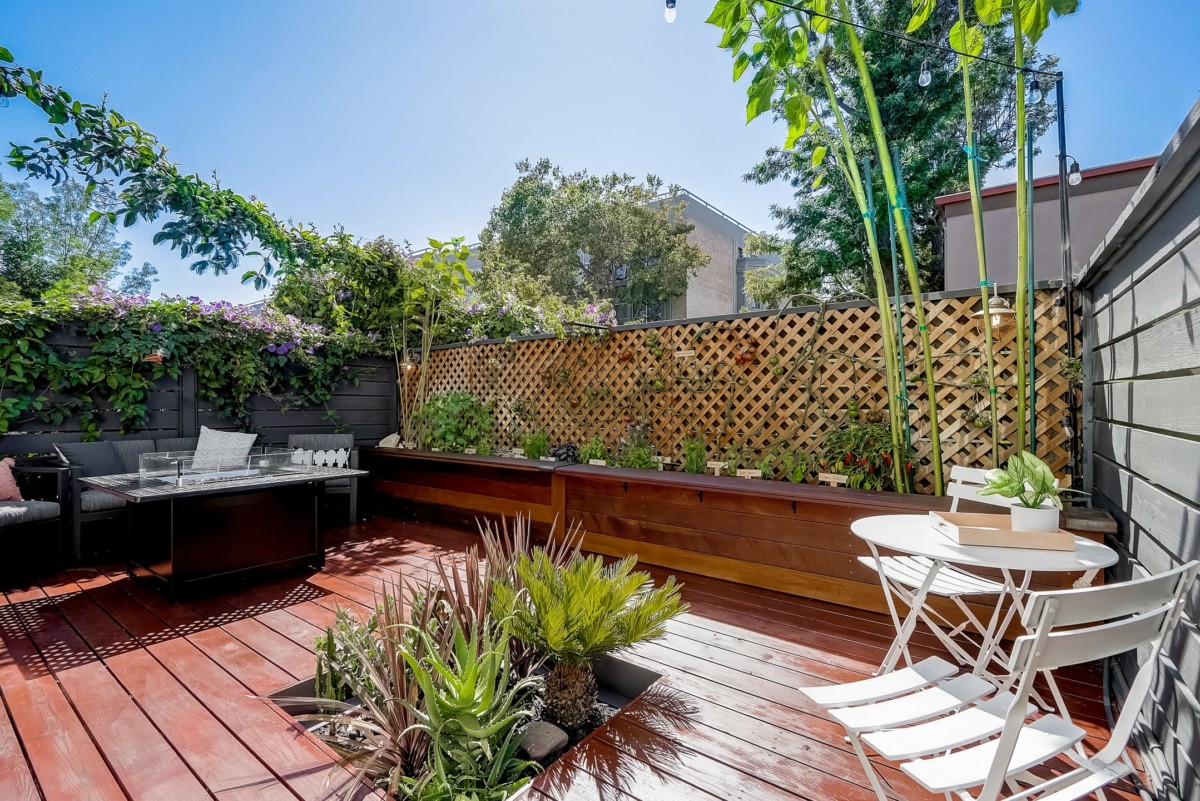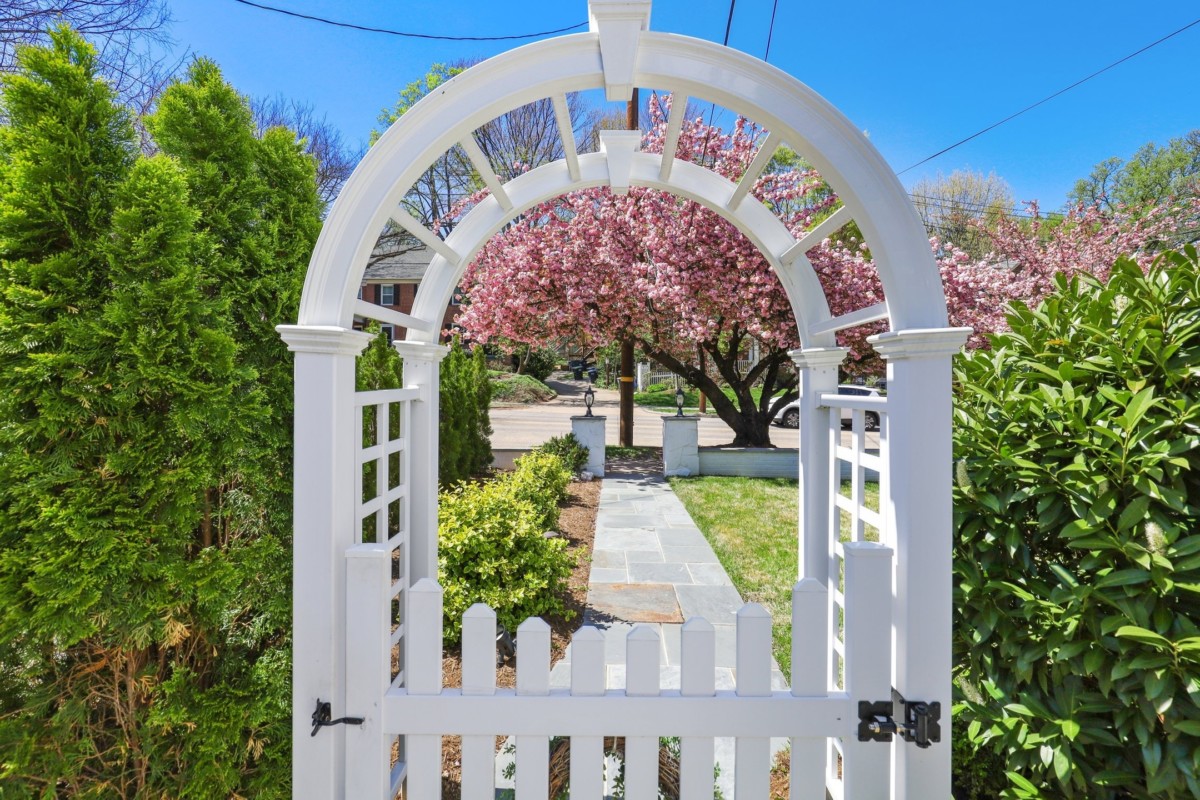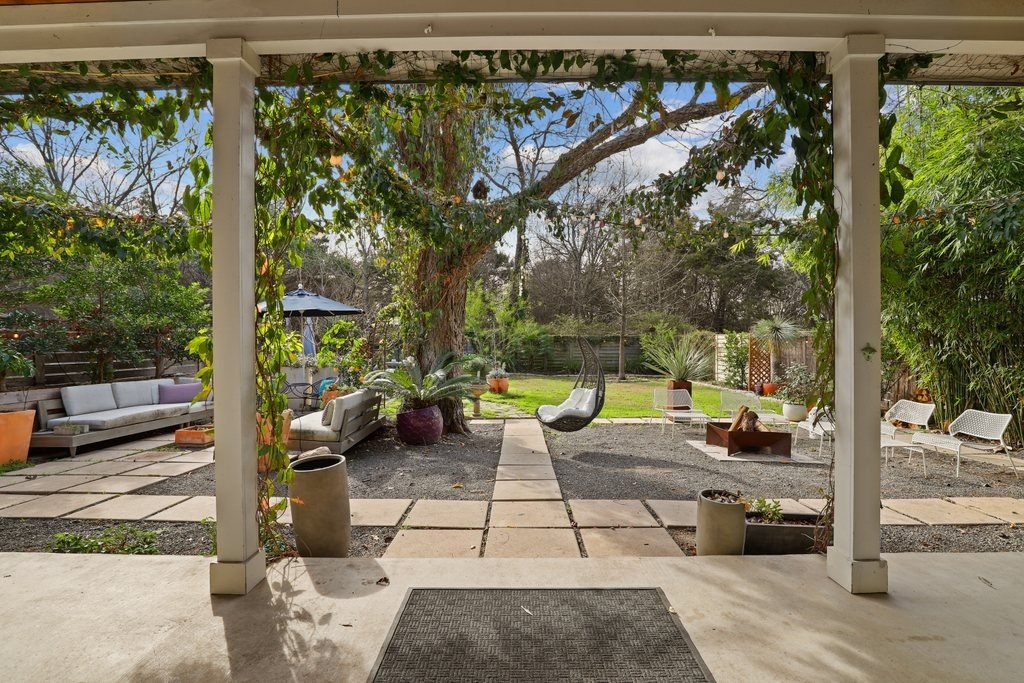Whether you own a house in Knoxville, TN, or are renting an apartment in Charlotte, NC, adding a trellis to your garden can support plant growth, spruce up your garden decor, and can be used to create more private outdoor spaces by acting as a fence. So what exactly is a trellis, and how can it add style and support to your outdoor oasis? Keep reading to find out.

What is a trellis?
“A trellis is a vertical support structure for plants. It can be made of many different materials from plastic and metal to wood or bamboo, among others, says design-build company Hicks Landscapes. “A trellis has a place in every landscape. They are versatile and also decorative. They support climbing plants such as clematis, roses, and ivy. Additionally, they can be used for vining vegetables such as cucumbers, squash, and beans. Create privacy in your garden with trellis panels. Whether bare or covered in vines, they provide a bit of separation from neighbors.”
Trellises types include latticework, wall mounted, obelisk, expanding, gothic, fan, and folding. Trellises typically have an open framework, allowing plants to grow upwards easily.
The benefits of adding trellises to your garden
A trellis is more than just design and decor benefits. Adding a trellis to your yard can increase air circulation, reduce fungal diseases among your plants or vegetable gardens, deter insects and pests, and give your plants more sunlight exposure, all while allowing pollinators to pollinate easily.
How a trellis benefits your plants’ growth
A native plant shop based in New England, Blue Stem Natives shares, “Using a trellis is a space-efficient way to grow many larger plants, allowing them to have proper airflow and sunlight for growth. Trellises can help bring native plants into your outdoor space as well. Training a vining plant such as Lonicera sempervirens up a vertical trellis allows you to bring a beautiful, wildly beneficial plant closer to your outdoor living area without compromising any other structures and allowing you to move it around as needed. Strawberries are another wonderful option, providing evergreen shade, adorable flowers, and delicious fruit, not to mention the pollinator value.”
Trellises enhance your garden design and decor
Garden design company Thistle says, “Trellises are the perfect solution to a patio or deck with an empty wall. Just insert a metal trellis into a large rectangular container, and you have the basis for a stunning vertical garden, don’t forget to attach the trellis to the wall. While people often think of planting a vine to climb up the trellis, that can take time, so instead, you can hang small potted plants off the trellis for instant foliage, color, and texture. Plant coordinating flowers and foliage in the container where the trellis is based, and it becomes a beautiful garden feature.”

Here are a few things to consider before starting your trellis.
Checklist for the perfect location:
You’ll want to check off the items below when finding the perfect location for your trellis:
- Avoid placing the trellis in windy locations
- Check for watering options nearby, either a hose, system, or can
- Find a location that doesn’t cast a shade on other plants
Be sure to check the manufacturer’s recommendations for proper instructions on anchoring your trellis to ensure your trellis and plants are protected from the wind. Anchor your posts into the ground to improve stability, or opt for a wall-mounted trellis. Most trellises are most stable when anchored 24 inches into the ground.
It’s important to consider what type of plants you want to grow on your trellis
Make sure the trellis you choose is large enough for the type of plant you want. Landscape designer Sagebrush Garden Design shares some of the best plants to consider: “Any climbing vine will do; however, some of our favorites are the creeping fig (Ficus pumila) for year-round greenery, Blue Moon Wisteria ( Wisteria macrostachya ‘Blue Moon’) for showy flowers, and Virginia Creeper (Parthenocissus quinquefolia) for fall colors.”
You’ll want to check your plants regularly to ensure they are attaching and growing properly. You may have to encourage them by weaving the plants through the trellis holes and securing them with twist ties for optimal vertical growth.
The perks of growing native plants
Growing your native plants can provide food and shelter for surrounding wildlife and support pollinators. Flower Power Garden, a garden center, shares, “In recent years, the importance of growing plants native to your region has become more widely known. Here in the Northeast, Coral Honeysuckle (Lonicera Sempervirens), Virginia Virgin’s-bower (Clematis Virginiana), and Virginia Creeper (Parthenocissus quinquefolia) are all gorgeous native vines you can trellis to support pollinators and birds.”
Research what plants are native to you. Growing native plants can also lower maintenance, produce beautiful flowers, and attract various birds, butterflies, and other wildlife by providing diverse habitats and food sources.
Think about design and decor when setting up your trellis
The garden design and fine gardening expert Taproot shares tips for selecting a trellis, “A trellis can be as simple or complex as you like. Large diameter lumber creates a craftsman look, while metal posts lean more towards a modern aesthetic. For heavier plants, consider grid-wire and metal or oversized posts. If possible, leave room behind the trellis or vine to allow for seasonal maintenance.”
Full-service landscape and design company Gotham Garden Design shares some decorative flowers you can add to your trellis.“Three of the best plants are the Mandevilla Sun Parasol series which comes in red, pink, and white, you also might find yellow and apricot. It can grow up to 10′ feet in one season and requires very little maintenance. The woody framework gives it more stability without needing constant training and support – this is about the closest to a “set and forget” tropical. The second series of plants/vines would be Passiflora. They are very exotic looking but easy to grow, appearing almost alien in design. For a perennial vine, there are several clematis cultivars. They are also large flowering, some up to 4″ across, and come in various colors. In most parts of the US, they are perennial. Although woody-stemmed, they are not aggressive. I often like to grow them with climbing roses. They can grow together without competing, and they are supported by the rose, which flowers for a shorter period of time – this keeps the show going and acts as a natural trellis.”

Your garden will thank you
Adding a trellis to your yard can create smooth transitions from one outdoor space to the next, provide additional privacy, and act as a background or support for climbing plants. Set the scene for your visitors with a wooden trellis seating area, a decorative arched trellis gate, or a backyard three threads trellis room. Add other structures like a gazebo or a latticework pergola for a thriving garden space you can also relax in.
More backyard and garden ideas + advice:
6 DIY Firepit Ideas To Spruce Up Any Backyard
How to Build an Outdoor Kitchen Perfect for Entertaining this Summer
Experts Share How to Create the Perfect Home Garden in Your Backyard
The post What is a Trellis? How You Can Take Your Garden to New Heights appeared first on Redfin | Real Estate Tips for Home Buying, Selling & More.
